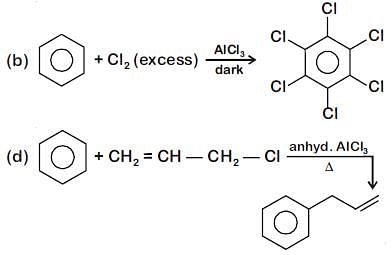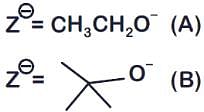JEE Main 2020 January 7 Shift 2 Question Paper & Solutions - JEE MCQ
30 Questions MCQ Test - JEE Main 2020 January 7 Shift 2 Question Paper & Solutions
A stationary observer receives sound from two identical tuning forks, one of which approaches and the other one recedes with the same speed (much less than the speed of sound). The observer hears 2 beats/sec. The oscillation frequency of each tuning fork is v0 = 1400 Hz and the velocity of sound in air is 350 m/s. The speed of each tuning fork is close to:
The electric field of a plane electromagnetic wave is given by:

At t = 0, a positively charged particle is at the point (x, y, z) =  . If its instantaneous velocity at (t = 0) is v0, the force acting on it due to the wave is:
. If its instantaneous velocity at (t = 0) is v0, the force acting on it due to the wave is:

At t = 0, a positively charged particle is at the point (x, y, z) =
 . If its instantaneous velocity at (t = 0) is v0, the force acting on it due to the wave is:
. If its instantaneous velocity at (t = 0) is v0, the force acting on it due to the wave is:| 1 Crore+ students have signed up on EduRev. Have you? Download the App |
In a Young's double slit experiment, the separation between the slits is 0.15 mm. In the experiment, a source of light of wavelength 589 nm is used and the interference pattern observed on a screen kept is 1.5 m away. The separation between the successive bright fringes on the screen is:
Two ideal Carnot engines operate in cascade (all heat given up by one engine is used by the other engine to produce work) between temperatures, T1 and T2. The temperature of the hot reservoir of the first engine is T1 and the temperature of the cold reservoir of the second engine is T2. T is temperature of the sink of first engine which is also the source for the second engine. How is T related to T1 and T2, if both the engines perform equal amount of work?
An ideal fluid flows (laminar flow) through a pipe of non-uniform diameter. The maximum and minimum diameters of the pipes are 6.4 cm and 4.8 cm, respectively. The ratio of the minimum to the the maximum velocities of fluid in this pipe is:
An electron (of mass m) and a photon have the same energy E in the range of a few eV. The ratio of de-Broglie wavelength associated with the electron and the wavelength of the photon is:
(c = speed of light in vacuum)
Mass per unit area of a circular disc of radius a depends on the distance r from its centre as σ (r) = A + Br. The moment of inertia of the disc about the axis, perpendicular to the plane and passing through its centre is:
A mass of 10 kg is suspended by a rope of length 4 m, from the ceiling. A force F is applied horizontally at the mid-point of the rope such that the top half of the rope makes an angle of 45° with the vertical axis. Then F is equal to: (Take g = 10 ms-2 and the rope to be massless)
A thin lens made of glass (refractive index = 1.5) of focal length f = 16 cm is immersed in a liquid of refractive index 1.42. If its focal length in liquid is fl, then the ratio  is closest to the integer:
is closest to the integer:
A box weighs 196 N on a spring balance at the north pole. Its weight recorded on the same balance if it is shifted to the equator is close to: (Take g = 10 ms-2 at the north pole and the radius of the earth = 6400 km)
An elevator in a building can carry a maximum of 10 persons, with the average mass of each person being 68 kg. The mass of the elevator itself is 920 kg and it moves with a constant speed of 3 m/s. The frictional force opposing the motion is 6000 N. If the elevator is moving up with its full capacity, the power delivered by the motor to the elevator (g = 10 m/s2) must be at least:
In a building, there are 15 bulbs of 45 W, 15 bulbs of 100 W, 15 small fans of 10 W and 2 heaters of 1 kW. The voltage of electric main is 220 V. The minimum fuse capacity (rated value) of the building will be:
Under an adiabatic process, the volume of an ideal gas gets doubled. Consequently, the mean collision time between the gas molecule changes from τ1 to τ2. If  for this gas. Then a good estimate for τ1 / τ2 is given by:
for this gas. Then a good estimate for τ1 / τ2 is given by:
An emf of 20 V is applied at time t = 0 to a circuit containing in series 10 mH inductor and 5Ω resistor. The ratio of the currents at time t = ∞ and at t = 40 s is close to:
(Take e2 = 7.389)
A particle of mass m and charge q has an initial velocity  . If an electric field
. If an electric field  and magnetic field
and magnetic field  act on the particle, its speed will be doubled after a time:
act on the particle, its speed will be doubled after a time:
In the figure, potential difference between A and B is:
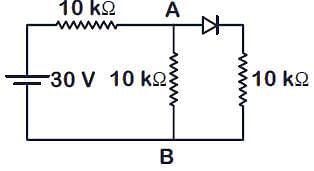
The activity of a radioactive sample falls from 700 s-1 to 500 s-1 in 30 minutes. Its half life is close to:
The figure gives experimentally measured B vs. H variation in a ferromagnetic material. The retentivity, co-ercivity and saturation, respectively, of the material are:
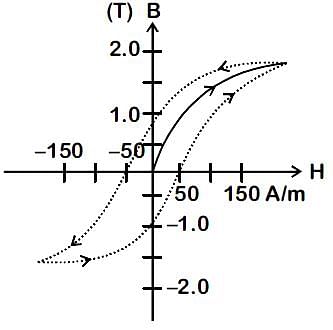
A planar loop of wire rotates in a uniform magnetic field. Initially, at t = 0, the plane of the loop is perpendicular to the magnetic field. If it rotates with a period of 10 s about an axis in its plane then the magnitude of induced emf will be maximum and minimum, respectively at:
The dimension of  , where B is magnetic field and is the magnetic permeability of vacuum, is:
, where B is magnetic field and is the magnetic permeability of vacuum, is:
Consider a uniform cubical box of side 'a' on a rough floor that is to be moved by applying minimum possible force F at a point 'b' above its centre of mass (see figure). If the coefficient of friction is μ = 0.4, the maximum possible value of 100 × b/a for box not to topple before moving is ______.
A 60 pF capacitor is fully charged by a 20 V supply. It is then disconnected from the supply and is connected to another uncharged 60 pF capacitor in parallel. The electrostatic energy that is lost in this process by the time the charge is redistributed between them is (in nJ) ________.
The balancing length for a cell is 560 cm in a potentiometer experiment. When an external resistance of 10Ω is connected in parallel to the cell, the balancing length changes by 60 cm. If the internal resistance of the cell is N/10Ω , where N is an integer then value of N is _________.
The sum of two forces  and
and  is
is  such that
such that  . The angle θ (in degrees) that the resultant of
. The angle θ (in degrees) that the resultant of  and
and  will make with
will make with  is, _______.(degree)
is, _______.(degree)
M grams of steam at 100°C is mixed with 200 g of ice at its melting point in a thermally insulated container. If it produces liquid water at 40°C [heat of vaporization of water is 540 cal/g and heat of fusion of ice is 80 cal/g], the value of M is _________.
In the following reactions, products (A) and (B), respectively, are

For the reaction 2H2(g) + 2NO(g) → N2(g) + 2H2O(g), the observed rate expression is: rate = kf[NO]2[H2]. The rate expression for the reverse reaction is:
Among the statements (a)-(d), the incorrect ones are:
(a) Octahedral Co(III) complexes with strong field ligands have very high magnetic moments.
(b) When Δ0 < P, the d-electron configuration of Co(III) in an octahedral complex is  .
.
(c) Wavelength of light absorbed by [Co(en)3]3+ is lower than that of [CoF6]3-.
(d) If the Δ0 for an octahedral complex of Co(III) is 18,000 cm-1, the Δt for its tetrahedral complex with the same ligand will be 16,000 cm-1.
Consider the following reactions:
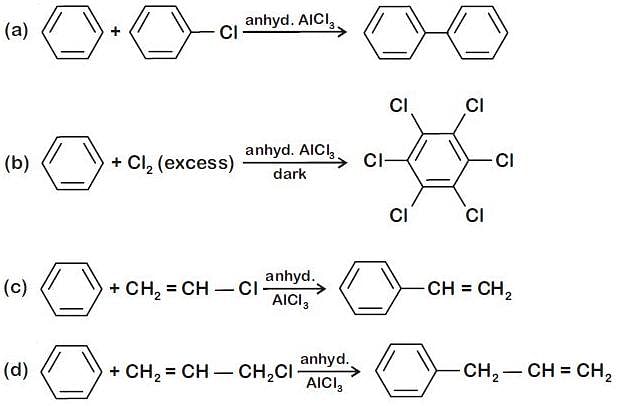
Which of these reactions are possible?
For the following reactions

where,

kS and ke, respectively, are the rate constants for substitution and elimination, and μ = kS/ke , the correct option is ________.


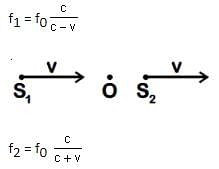



 at t = 0 at z = πk is given by
at t = 0 at z = πk is given by
 is antiparallel to
is antiparallel to 




 is antiparallel to
is antiparallel to  .
.


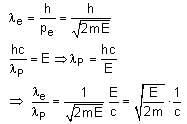
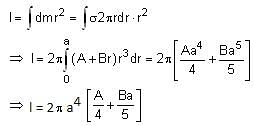
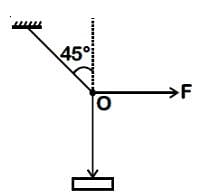
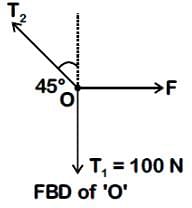









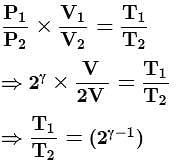
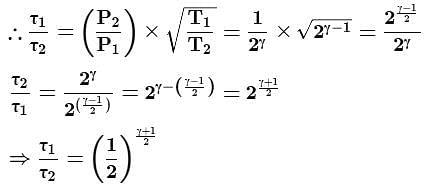




 only
only


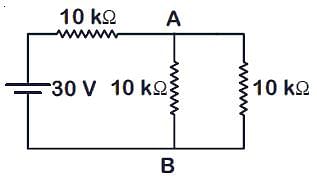


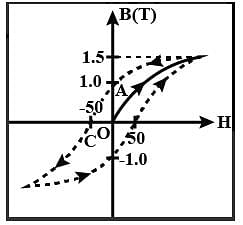


 i.e. 2.5 s or 7.5 s.
i.e. 2.5 s or 7.5 s.
 is the energy density of magnetic field.
is the energy density of magnetic field.
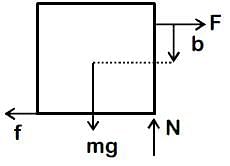



 is 75.
is 75.




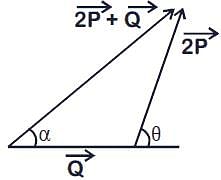
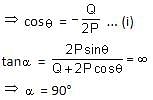





 .
. . It implies that λabsorbed of [Co(en)3]3+ is less than that of [CoF6]3-.
. It implies that λabsorbed of [Co(en)3]3+ is less than that of [CoF6]3-.
